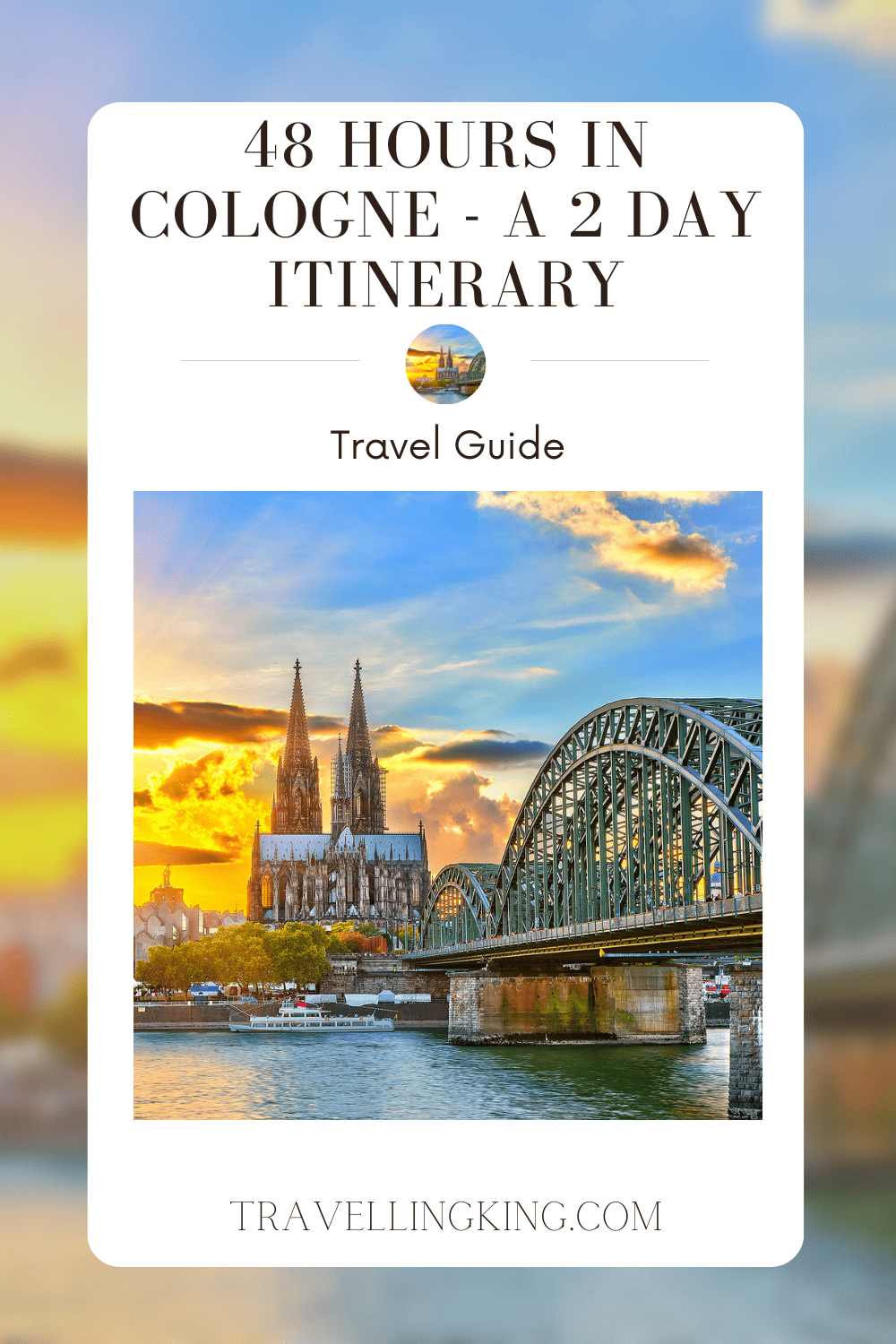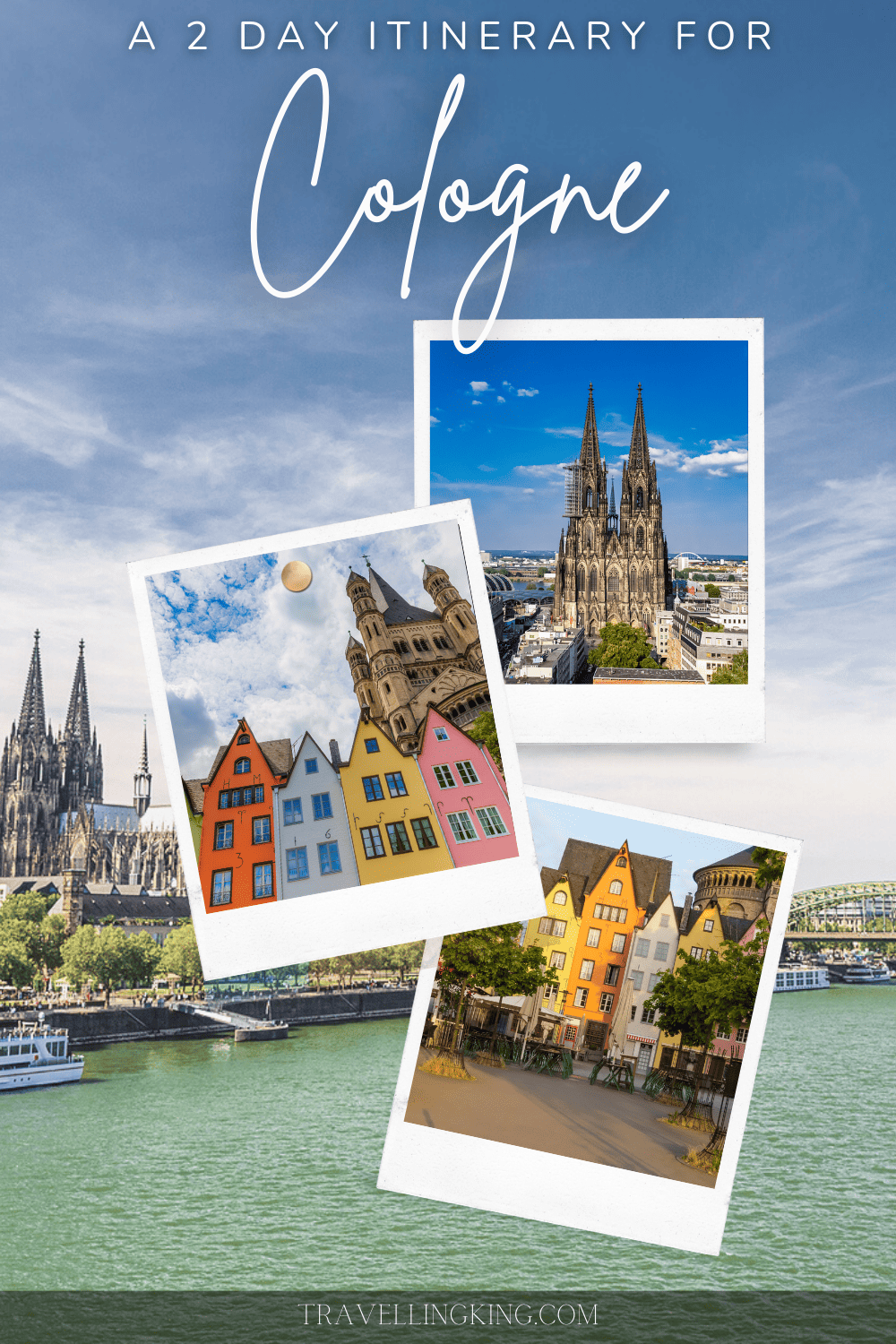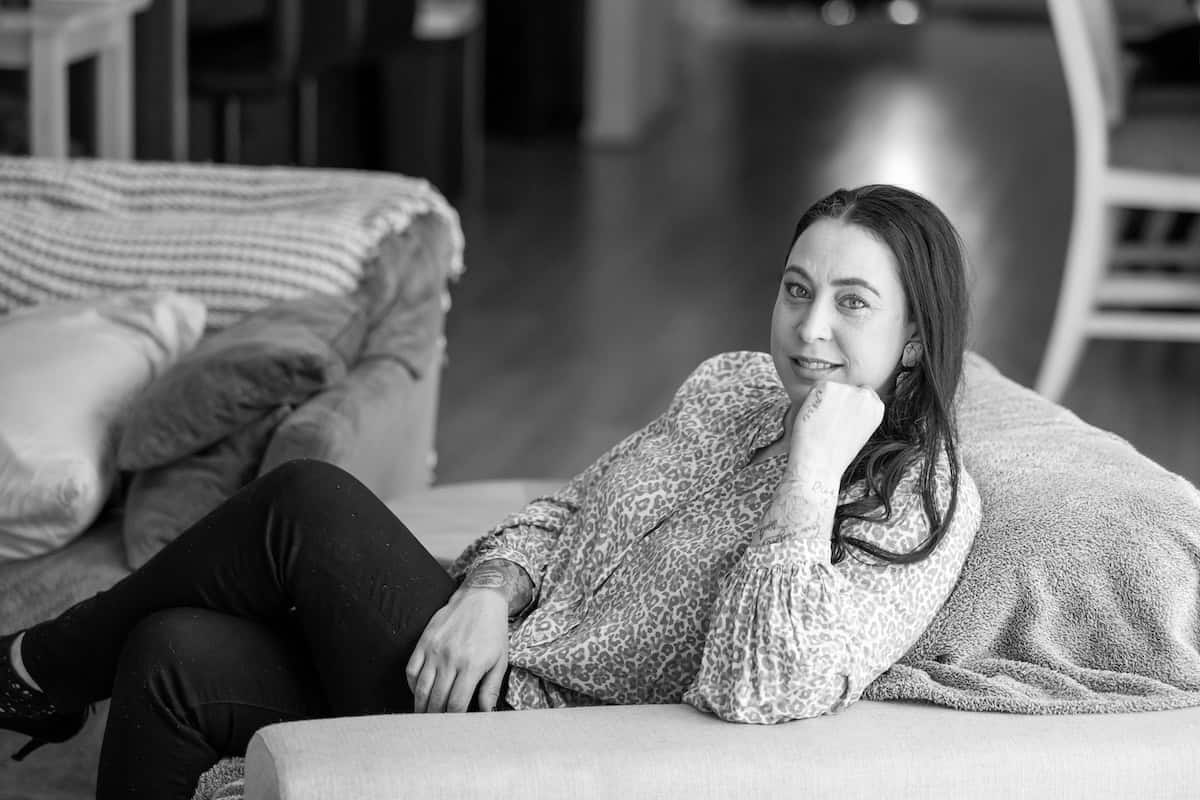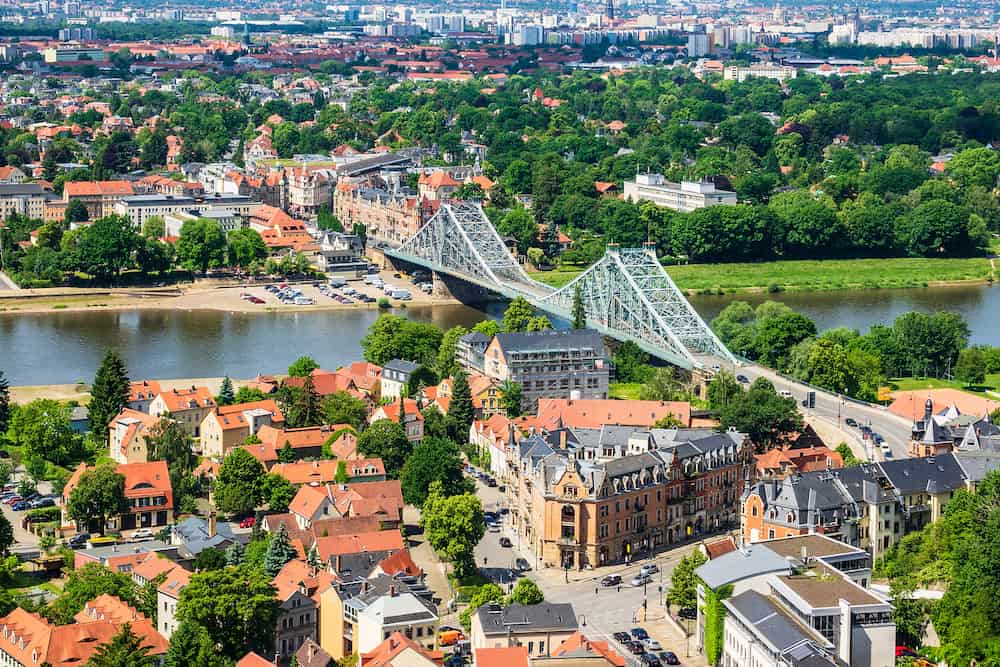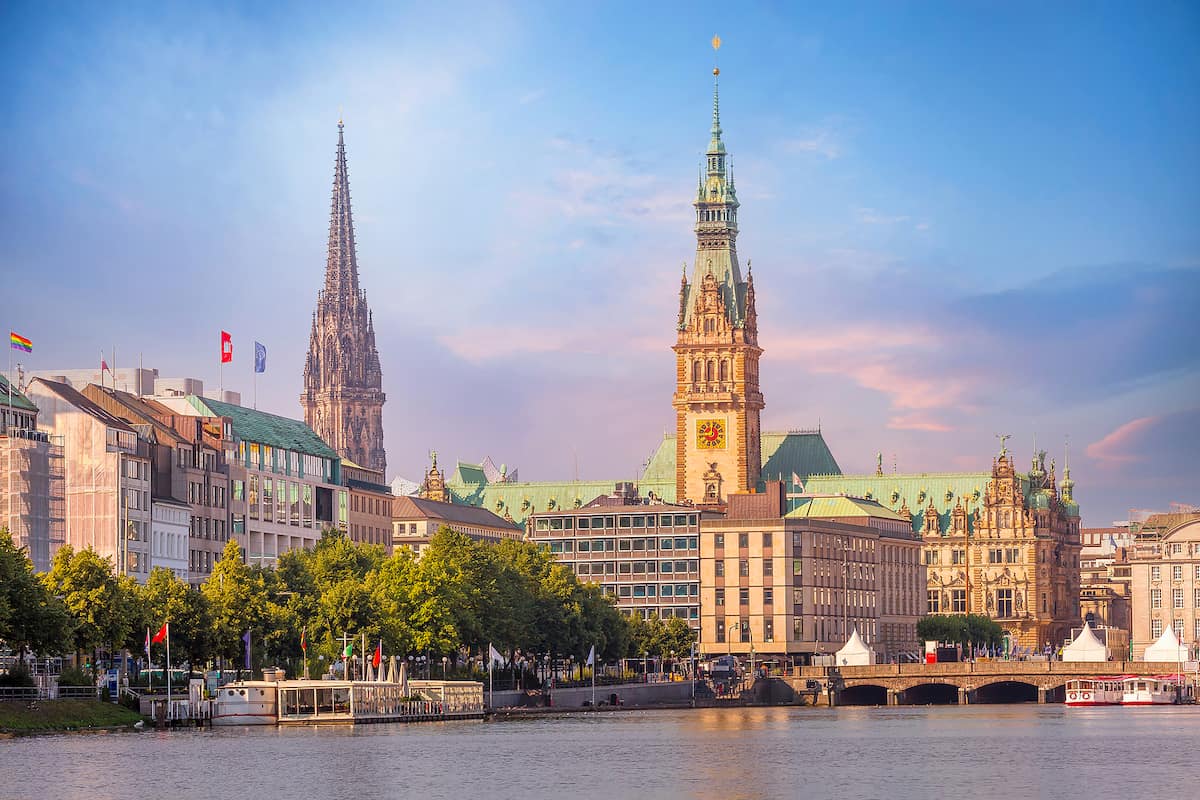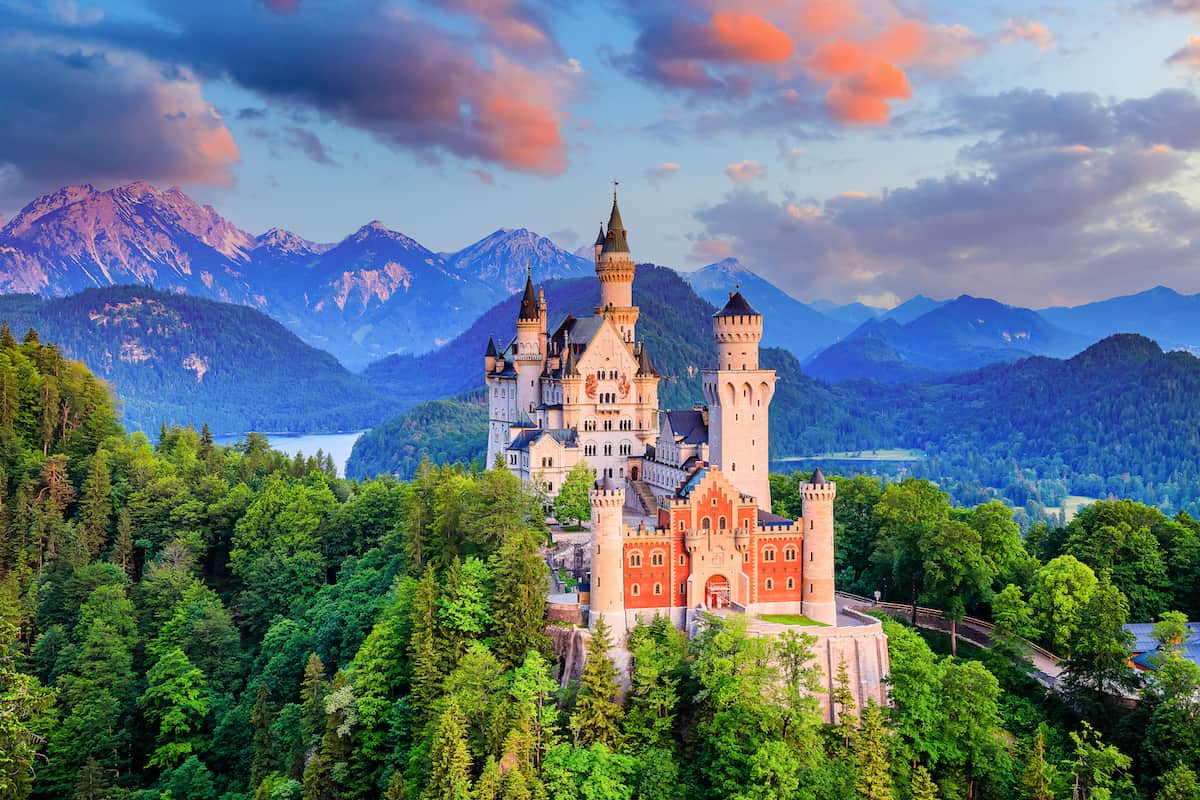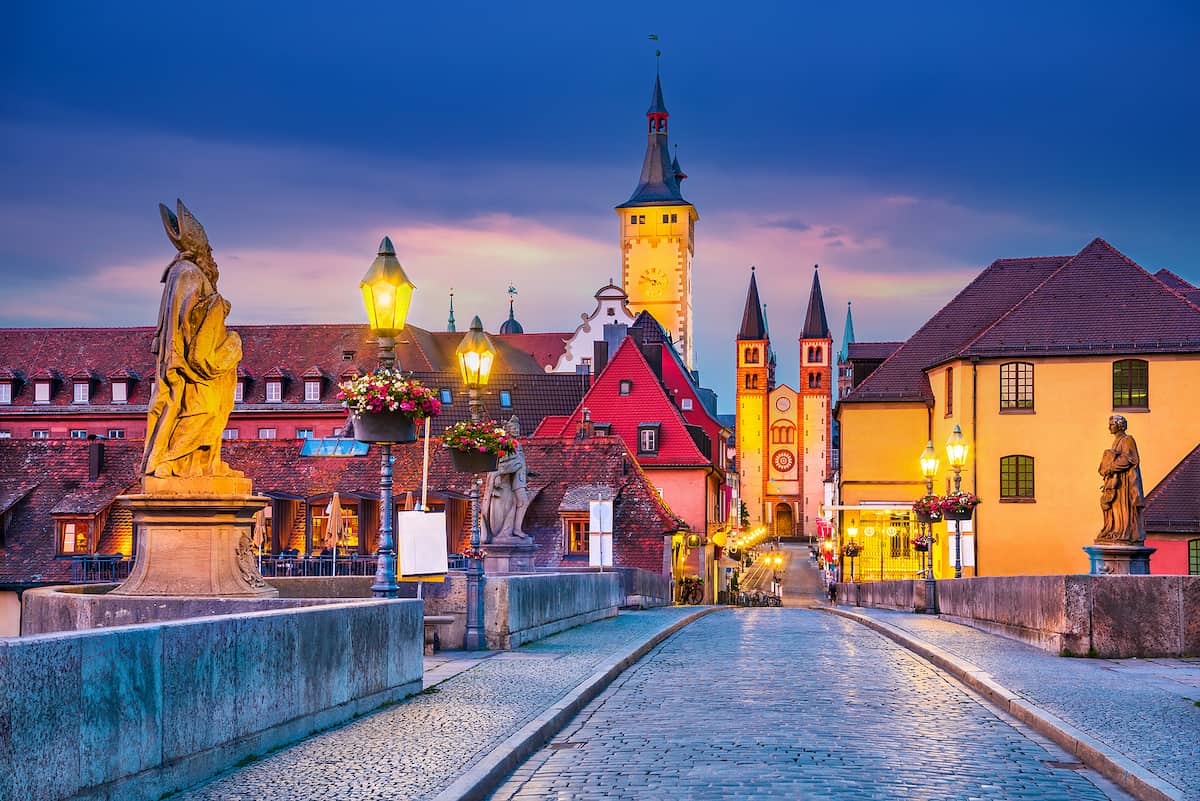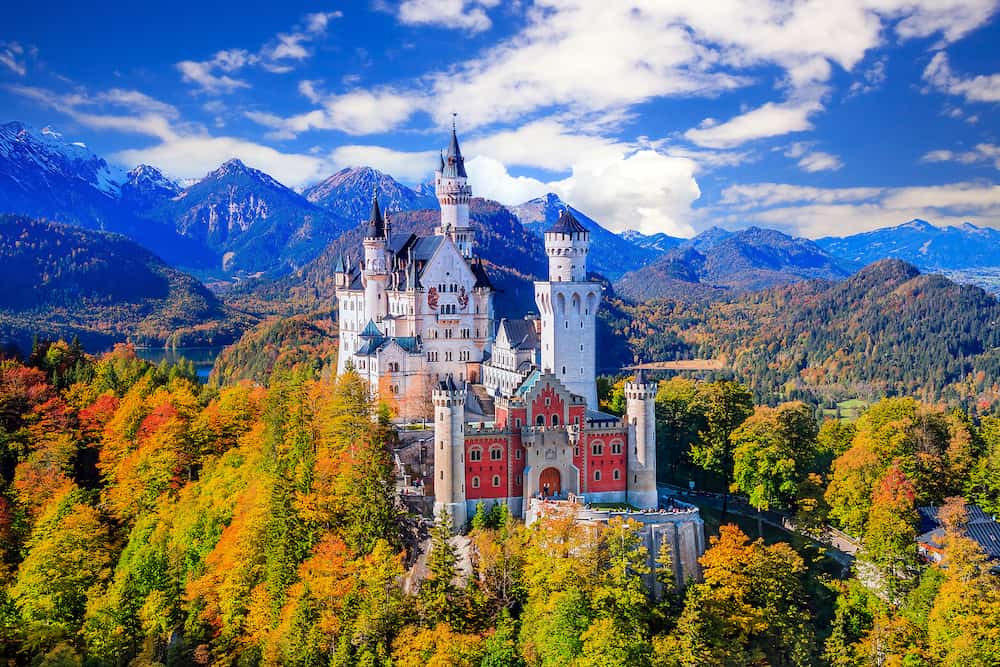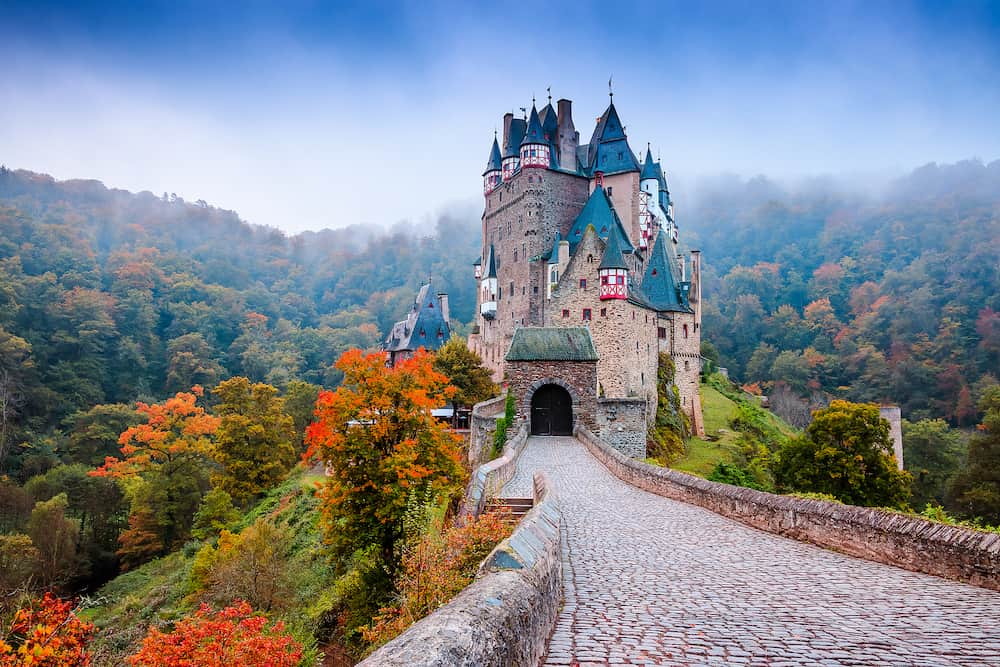48 hours in Cologne – A 2 day Itinerary
In 2019, you might’ve watched Charlies Angels and seen the girls travel across Germany fighting villains and causing chaos. Whilst that certainly was interesting, the backdrop was even more so.
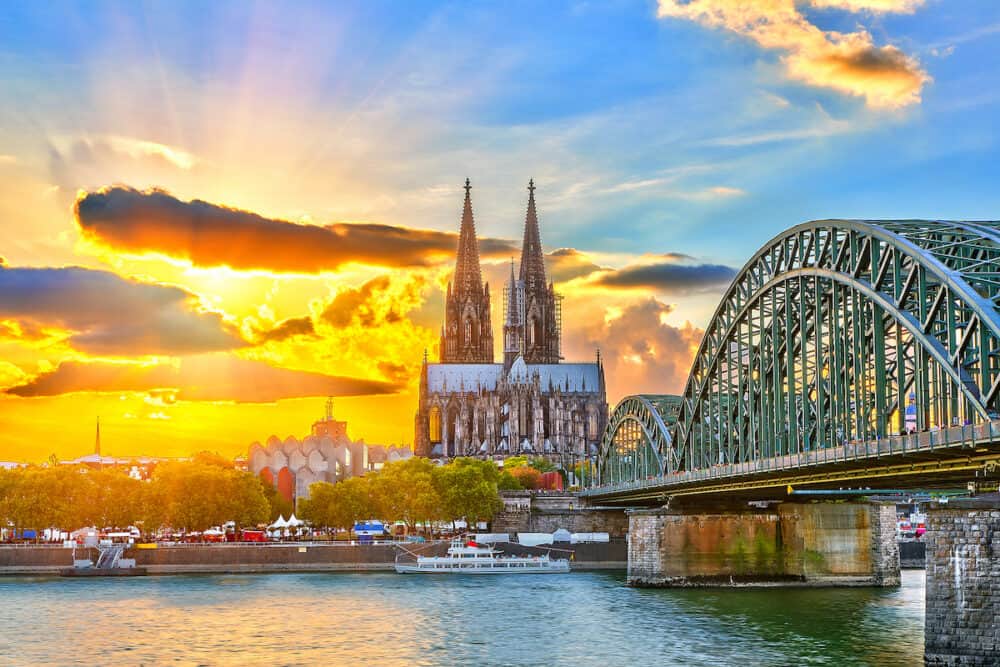
If the Angels were to go on a 2 day itinerary for Cologne in Germany, they would see the Cologne Chocolate Museum, the Cologne Cathedral, Cologne’s Old Town, the Hohenzollern bridge, Museum Ludwig, the Rhine River, the Twelve Romanesque Churches and Schildergasse.
By the end of their trip, they would be enthralled by the dark architecture, moody atmosphere and thrilling activities in this 2 day itinerary for Cologne.
Plan your trip
Save on fees abroad with the Wise Card—use it at ATMs, restaurants, and for flights or hotels in over 150 countries. Manage 40+ currencies in real-time with the Wise app.
Need Help Planning?
- Cheap Flights: Find the best deals.
- Accommodation: From hostels to luxury stays.
- Car Rental: Affordable options worldwide.
- Sightseeing Tours: Explore without breaking the bank.
- Travel Adapter: One adapter for all your needs.
- Travel Insurance: Don’t risk it—stay covered.
This post includes affiliate links. Read my full disclosure and content policy.
Best Time to Visit Cologne
Summer (June to August) is peak tourist season in Cologne, with warm temperatures and plenty of sunshine. The average temperature during this time is around 20-25°C (68-77°F).
This is a great time to enjoy outdoor activities, such as walking along the Rhine River, visiting the parks and gardens, and attending music festivals and outdoor events.
Fall (September to November) is a great time to visit Cologne, as the crowds have thinned out, and the weather is still mild.
Another good time to visit is Spring (March to May) as the weather is starting to warm up, and the city is in full bloom.
Where To Stay in Cologne
Cologne has cute and cool neighborhoods to stay in that will suit everyone’s preference.
Altstadt is in the historic center of Cologne, and it’s a nice place to stay if you want to be close to the city’s main attractions, such as the Cologne Cathedral, the museums, and the Rhine River. There are plenty of hotels, hostels, and apartments to choose from in this area.
Neustadt-Nord is a trendy neighborhood located to the North of the Altstadt. It’s a great place to stay if you’re looking for a lively atmosphere.
Ehrenfeld is a hip and happening neighborhood located to the West of the city center. It’s an interesting place to stay if you’re looking for an alternative vibe. The area is also home to many music venues and nightlife spots.
Deutz is located on the East bank of the Rhine River, opposite the Altstadt. It’s a cool place to stay if you’re attending a trade fair or event at the Koelnmesse exhibition center, which is located in this area.
Südstadt is a charming neighborhood located to the South of the city center. It’s a relaxing place to stay if you’re looking for a quieter atmosphere, with plenty of beautiful parks and gardens to explore.
Overview Of 2 Days In Cologne Itinerary
Day 1 in Cologne
- Cologne Chocolate Museum
- Cologne Cathedral
- Cologne Old Town
- Hohenzollern bridge
Day 2 in Cologne
- Museum Ludwig
- Rhine River
- Twelve Romanesque Churches
- Schildergasse
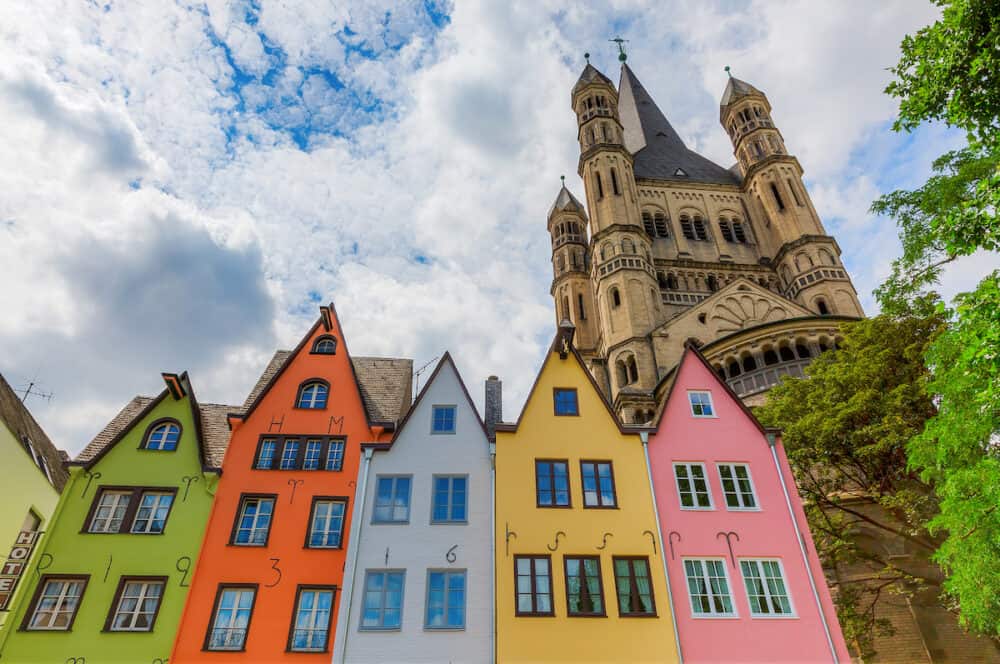
Day 1 in Cologne
Cologne Chocolate Museum
Start your day off in the sweetest way possible – with a decadent hot chocolate and chocolate pastries from the Cologne Chocolate Museum.
The Cologne Chocolate Museum (Schokoladenmuseum Köln) is a popular tourist attraction located on the Rhine River in the Rheinauhafen district of Cologne, Germany.
The museum is dedicated to the history and production of chocolate. If you’re a chocolate lover, this place will have you dreaming of its decadence days after you’ve visited.
The museum was opened in 1993 and has since become one of the most popular attractions in Cologne, drawing over 600,000 visitors annually.
The museum building itself is shaped like a ship and is located on a peninsula in the Rhine River, giving visitors stunning views of the city and the river. The idea behind the design is to pay tribute to the mode of transportation during the 1900s.
Inside the museum, visitors can learn about the history of chocolate and how it’s made, from the cultivation of the cocoa bean to the manufacturing of rich, milky, goodness.
The museum has several exhibits that showcase the different stages of chocolate production, including a tropical greenhouse with cocoa trees, a production line where visitors can see chocolate being made, and a chocolate fountain where visitors can sample different types of chocolate.
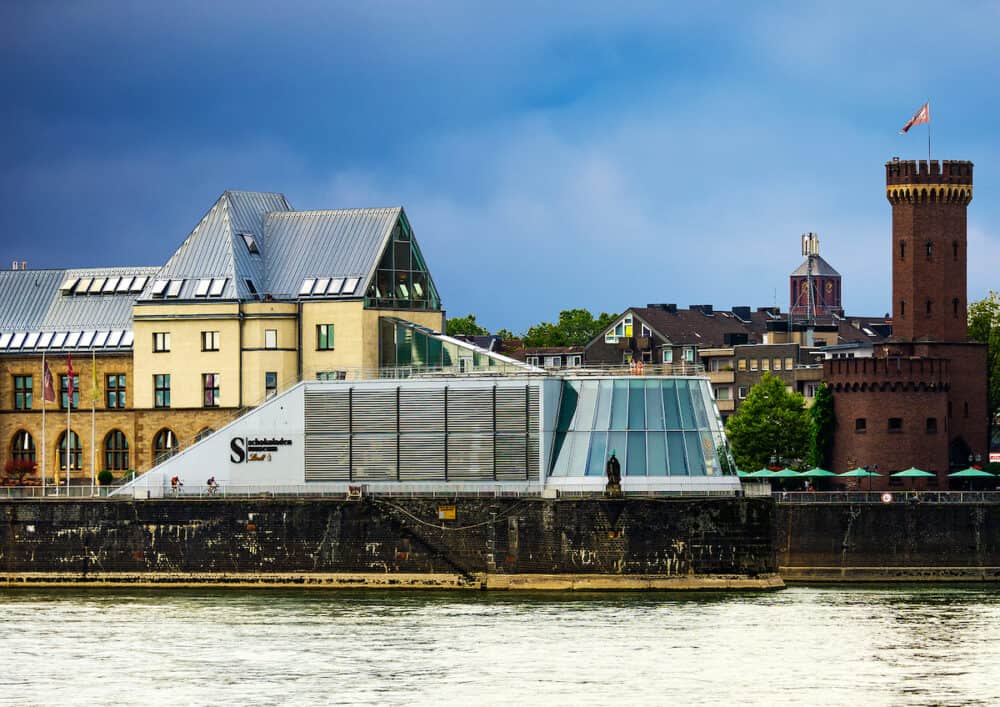
Cologne Cathedral
The Gothic star of the trip is up next. The Cologne Cathedral (Kölner Dom) in all its glory is a magnificent cathedral located in the heart of Cologne, Germany.
It’s arguably referred to as the heart of Germany due to it being one of the most visited tourist attractions in the city, and one of the most iconic landmarks in Germany. After all, it is a recognized UNESCO World Heritage Site.
The construction of the cathedral began in the 13th century, but it was not completed until the 19th century. It is an impressive structure, standing at 157 meters (515 feet) tall, making it one of the tallest cathedrals in the world.
The exterior of the cathedral is adorned with intricate stone carvings and sculptures, including gargoyles and other ornamental details.
The cathedral gives off similar vibes to those scenes in the childhood film The Hunchback of Notre Dame. Didn’t we all fall in love with travel after watching that film?
Inside the cathedral, you’ll find beautiful stained-glass windows and impressive vaulted ceilings. One of the most notable features of the interior is the Shrine of the Three Kings, which is said to hold the remains of the Three Wise Men who visited the baby Jesus.
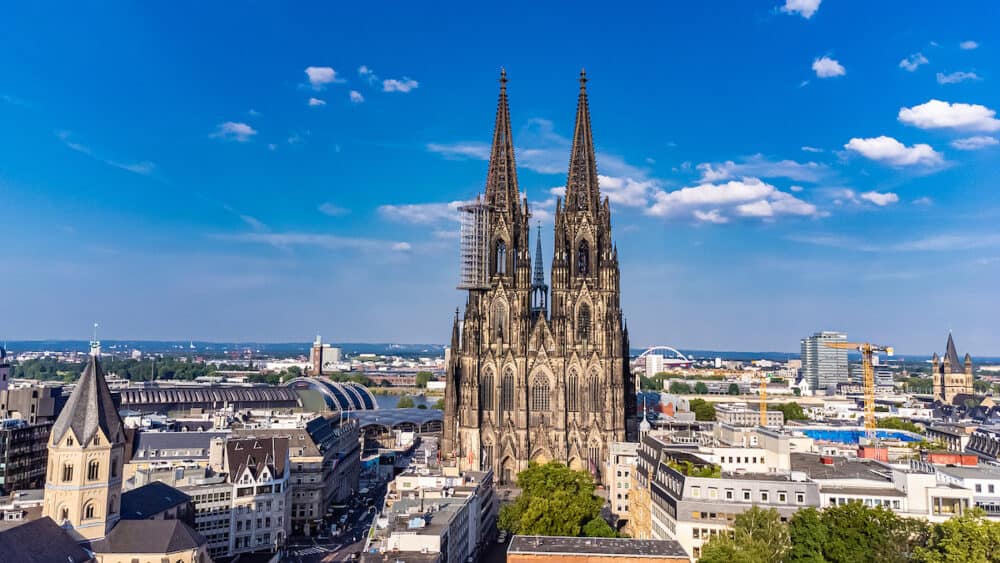
Cologne Old Town
Cologne’s Old Town (Altstadt) draws on its historical architecture to create an atmosphere that gives off dark academia vibes.
As the afternoon comes to a close, and the sky becomes a darker shade of blue as dusk approaches, this part of the city becomes magical.
One of the most notable features of the Old Town is its picturesque narrow streets and traditional half-timbered buildings.
The area has a rich history, dating back to Roman times, and many of the buildings and monuments in the area reflect this heritage.
The Old Town is brimming with activity and overflows with a wide range of shops, restaurants, cafes, and bars.
You can wander through the area on foot, and slip through the winding streets which you’ll find are lined with colorful buildings and a vibrant street life.
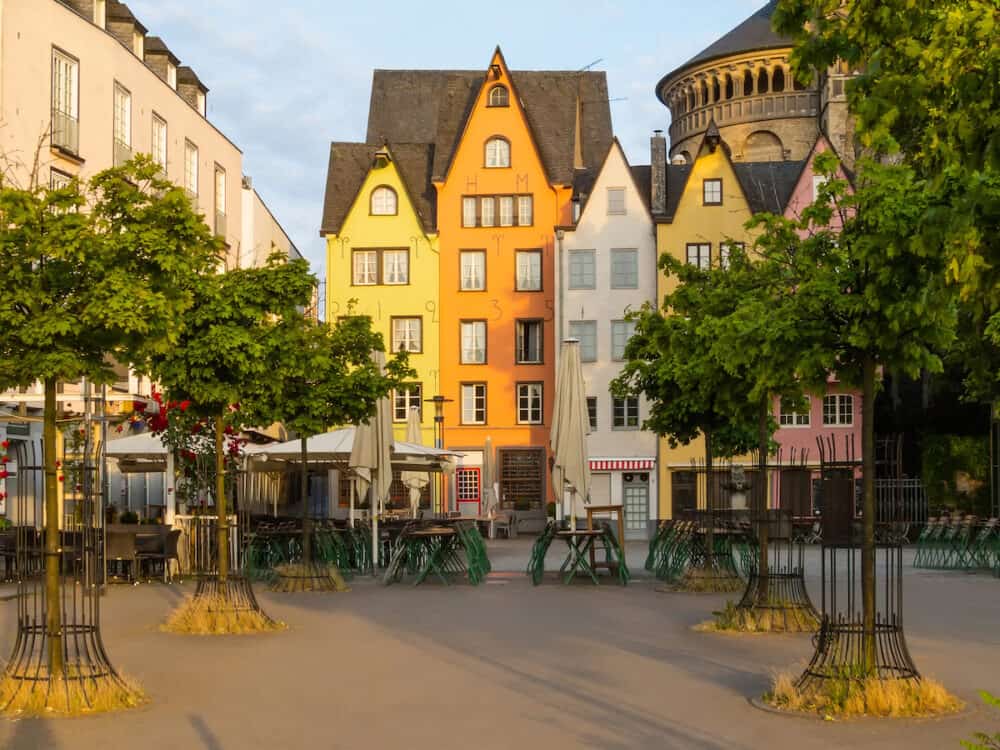
The Hohenzollern Bridge
The final landmark and activity for today is the Hohenzollern Bridge. It spans the Rhine River and connects the Old Town of Cologne with the Deutz district on the other side of the river.
The sun will set over the water and filter through the gaps in the bridge, producing a dappled effect that is worth photographing to trap the moment in time forever.
Similar to the tradition found near the Seine in Paris, France, Hohenzollern is also famous for its love locks, which are padlocks that couples attach to the bridge as a symbol of their love.
The tradition of attaching love locks to the bridge began in the early 2000s and has since become a popular activity for tourists visiting the city.
In addition to fortifying relationships and spreading promises of love and joy, the Hohenzollern Bridge is also an important transportation hub for the city.
It carries both pedestrian and vehicle traffic, including the S-Bahn (light rail) and regional trains that connect Cologne with other cities in the region.
If you’d like to see the bridge in its prime, consider waiting for the annual “Cologne Lights” festival, where the bridge is illuminated with colorful lights and fireworks. A truly magical atmosphere is created and is definitely worth seeing.
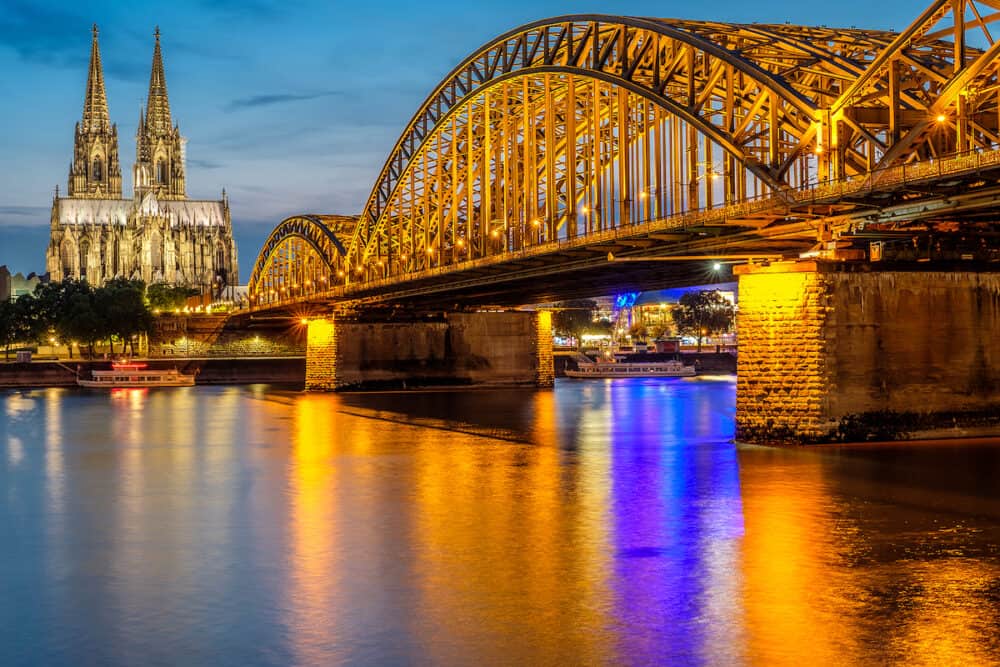
Day 2 in Cologne
Museum Ludwig
Today you’ll continue along a path of historical wonder and learn about Cologne’s past and worldly influence. It’s amazing how every city is so unique and has contributed in one way or another to the world.
Museum Ludwig is the Louvre of Cologne and is known for its historical art collection. It was founded in 1976 and is named after Peter and Irene Ludwig, who donated a large portion of their extensive art collection to the museum.
The museum’s collection spans the 20th and 21st centuries and includes a wide range of artworks, from pop art to abstract expressionism, as well as contemporary art from around the world.
One of the museum’s most notable collections is its extensive holdings of Pop Art, including works by artists such as Andy Warhol, Roy Lichtenstein, and Jasper Johns.
Even if you’re not an artist or great lover of it, you should definitely do a walk-by as you’re bound to be impressed by the artworks throughout the gallery.
In addition to its permanent collection, the museum hosts a range of temporary exhibitions throughout the year, featuring works by both emerging and established artists.
The exhibitions cover a wide range of styles and mediums, from painting and sculpture to photography, video, and installation art. Check if there are any exhibitions running during your time in Cologne as each one is unique.
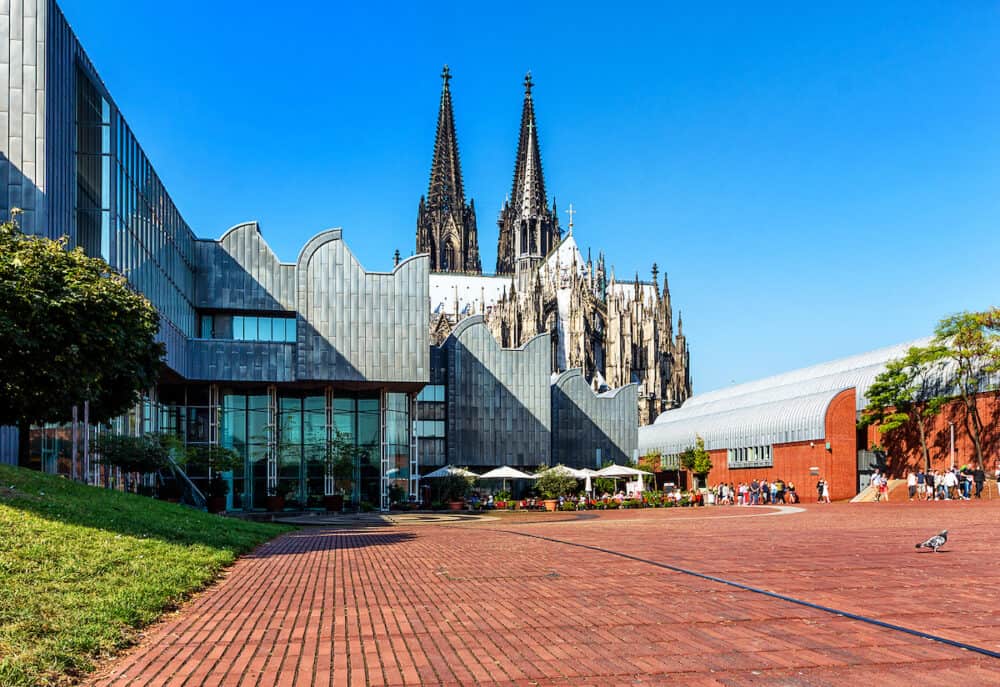
The Rhine River
You’ll spend the rest of your morning strolling along the Rhine River, breathing in the crisp air and watching the activity of the river pass. It looks calm, peaceful and unassuming, but the Rhine River has, (and in the past had) a big responsibility.
The Rhine River is one of the longest and most important rivers in Europe, stretching over 1,230 km (765 miles) from its source in the Swiss Alps to its mouth at the North Sea.
It is an iconic symbol of the region, and its waters played a crucial role in the history, culture, and economy of the countries and cities it flows through, including Germany, Switzerland, France, and the Netherlands.
The Rhine River is an important transportation hub for the region. It connects cities and towns along its banks, providing a vital link for both trade and travel. In Cologne, the river is used for both commercial and recreational purposes, and visitors can often see barges and ships carrying goods up and down the river.
But you don’t need to worry about that, you can enjoy it from an entertainment perspective by taking a pleasurable boat cruise along it. Compliment the ride with morning tea and brunch and take in the flower clad riverbeds as you pass through the city of Cologne.
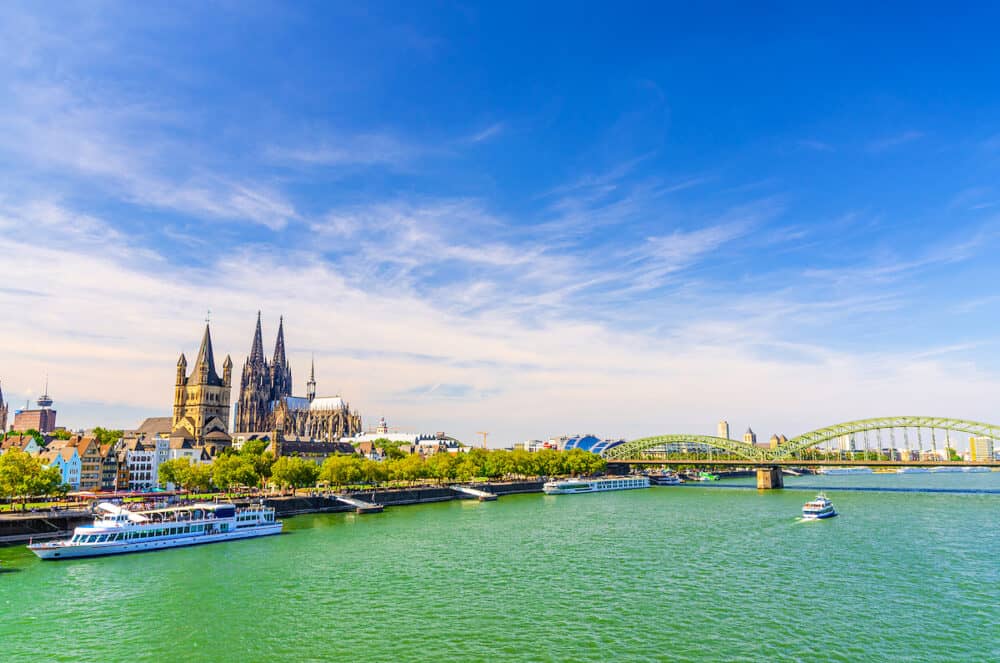
The Twelve Romanesque Churches
Suiting its name perfectly well, the historical landmark is made up of twelve churches located in the Old Town of Cologne, Germany. The churches date back to the Middle Ages and are notable for their Romanesque architecture and ornate interiors.
The churches were built between the 11th and 13th centuries and served as important religious and cultural centers in the city. They were constructed in the Romanesque style, which was characterized by round arches, sturdy columns, and thick walls.
The churches were also decorated with elaborate frescoes, sculptures, and other works of art. Walking through the churches is like walking through lands from fantasy novels like A Court of Thorns and Roses.
Go on a self guided tour, or with a tour group to see all 12 churches or the most famous ones if you’re running out of time such as St. Maria im Kapitol, which is one of the oldest and largest churches in Cologne.
Look for St. Andreas, which features a rare 13th-century choir screen and a collection of medieval tombstones. Don’t forget to take some time to see St. Gereon, which is known for its octagonal shape and elaborate frescoes.
A great way to get the full feel of the church is by going to one of their multiple services or events which occur frequently. Check which events are taking place whilst you’re visiting Cologne.
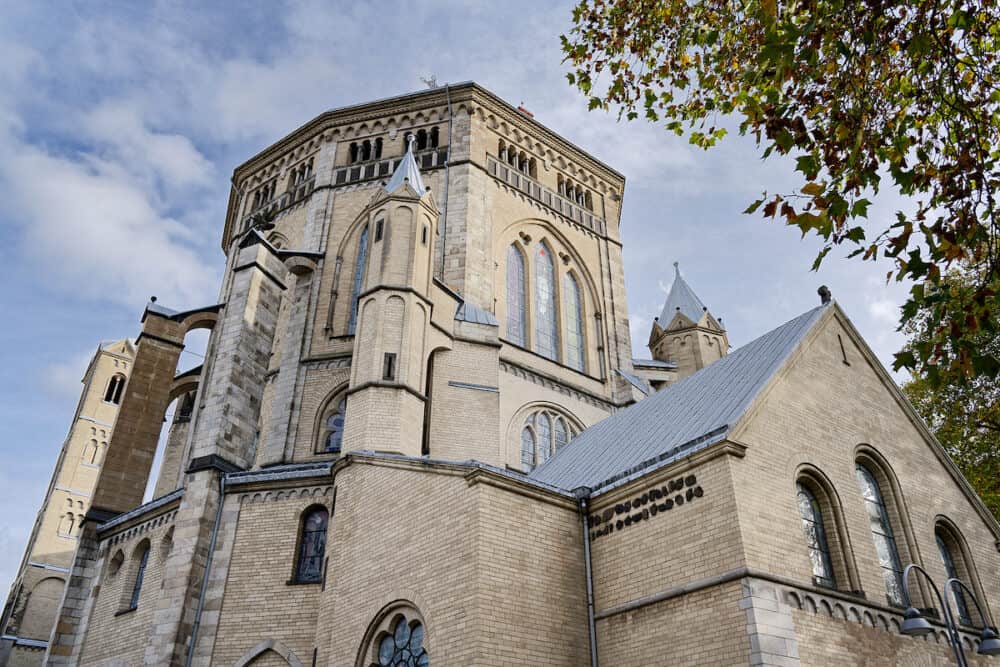
Schildergasse
Back to the modern world for your final few hours in Cologne. You’ll head to Schildergasse to go on a European shopping spree. Schildergasse is a long street filled with boutique shops and department stores featuring some of your favorite fashion brands including Zara, H&M, and Tommy Hilfiger.
Within Schildergasse you’ll also get to see several historical landmarks, including the Apostelnkirche, a 13th-century church, and the Kaufhof department store, which dates back to the early 20th century and is one of the largest stores in the city.
The street dates back to Roman times, when it was known as Via Salaria. It later became an important commercial hub during the Middle Ages, and today it remains a bustling center of commerce and activity in Cologne.
It’s quite funny to think that you’re walking on the same streets as people who didn’t even know what a “designer brand” was at that point in time.
Shop until you drop, and when you do, the pretty paveside cafes of Schildergasse will catch your fall. Quench your thirst with a local beer tasting and snack on traditional German specialties. It’s the most relaxing and special way to end your time in Cologne.
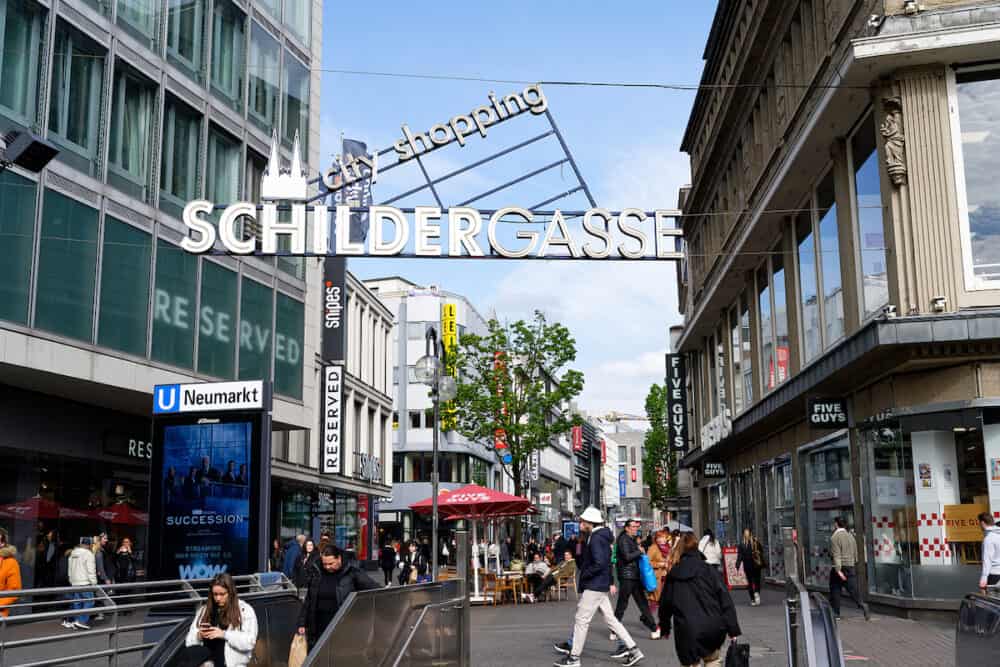
You’ve navigated rivers, intimidating gargoyles, beer challenges and thousands of steps within 48 hours in Cologne… It’s safe to say that you would’ve passed the Charlie’s Angels training and are officially part of the Cologne explorer team.
Cologne is a city stopped in time that appreciates its roots and holds them close whilst also acquiescing to the modern day tourist by giving them international favorites.
The summery contrast of flower littered river beds and dark, imposing churches gives the city a fluctuating personality that keeps visitors on their toes and wondering what’s around the next corner.
Recommended tours in Cologne
- Cologne City Tour Experience cathedral city on the Rhine
- Guided Brewery Walking Tour in Cologne
- Discovering Köln | Cologne City Tour with The Walkings
- The Chocolate Museum Cologne Entrance Ticket
- City Tour Cologne in a double-decker bus
- Street Art Tour Cologne Ehrenfeld
- Old Town Private Brewhouse Tour
- Dom und Altstadt Tour (ohne Innenbesichtigung/ mit Kölsch)
- Kölsch & Christmas Market Tour in Cologne
- Cologne City Tour “Domstadt Experience” Exclusive tour for up to 12 people
If you’d like to save it for later, please save it to Pinterest.
